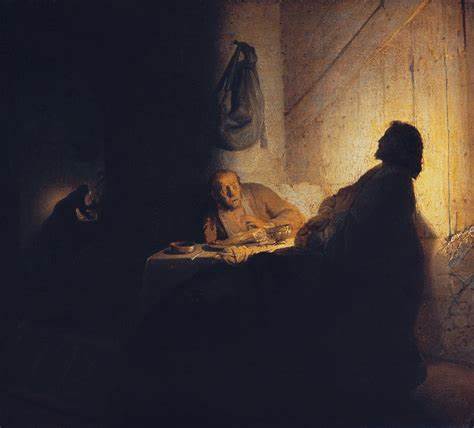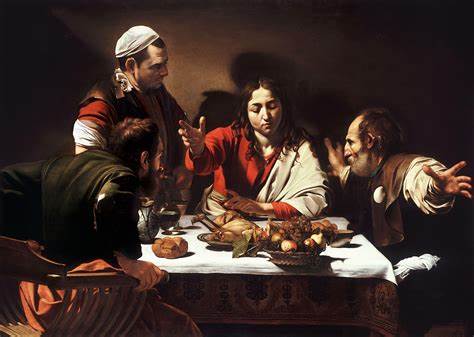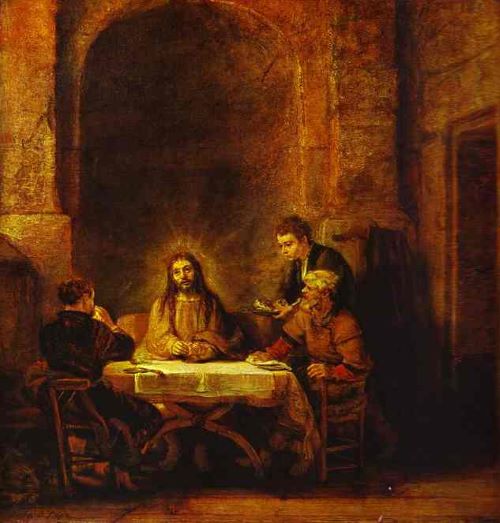
The Uses of Light
It is interesting to speculate whether the art of Caravaggio – so stunning in its inventiveness and iconoclasm, yet so much the art of impetuous youth – would have matured into something more profound with age, had he lived to have a late style. Certainly Rembrandt, who owes so much to Caravaggio for defining the possibilities of light and shade as a tool, was also impetuous in his youth, as evidenced in his earlier essay at the “Emmaus” subject. Ultimately one has to think that Caravaggio, the brawling and hard-living rebel, was not the man to have developed the depth and subtlety that Rembrandt did in his later years.


The comparison of their two versions of the same biblical subject is fascinating in showing the same artistic device employed for such very different ends. The story, if it is not familiar to you, tells of one of Christ’s appearances to his disciples after the Resurrection. Two disciples, on the road to Emmaus, stop at an Inn, where they sit down to eat with a stranger. Only when he breaks bread, in a re-enactment of the last supper, do they recognize him as the risen Christ.
What a moment! Caravaggio milks the drama of the situation for all it’s worth: the intimate closeness of the moment, the shock of recognition, the looming bulk of the foremost figure as he shoves back his chair…into your very lap! As befits the moment of highest drama, the scene is lit like a stage, and evokes memories of theatrical moments of equal impact. The stark juxtapositioning of lights and darks burns the scene into our retina and our consciousness.
How different is the late Rembrandt’s interpretation of the moment! The use of light and dark eliminates all hard edges, and suspends the scene in a timeless continuum, demanding contemplation. Where the impact of the Caravaggio, however strong, is necessarily instantaneous and superficial, the impact of the Rembrandt fills us slowly and subtly. For him the story is not one of the high drama of sudden recognition, but of the meaning of the breaking of the bread, reflecting all the symbolism of the Last Supper as it is gently restated by Christ’s actions. It is the difference between the “miracle” as a demonstration of the superhuman powers of God, and the true miracle of faith, understanding and acceptance that can only happen within each of us.
I love these educational opportunities!! Keep em coming
This was so wonderful. Very appropriate for my work.
Thanks for generously sharing